Southwest:
Güterfelde
Known for its castle, however, the Güterfelder Haussee and the Güterfelde Heide are particularly inviting for local recreation. A walk through the Wilmersdorf forest cemetery Güterfelde is also worthwhile.
Outside of Berlin and yet connected to it
Closely interlocked with the castle
– the history of the village
The rich elite of Berlin settled here or restored – in the times as a Berlin sanatorium. The then choice as a place of recreation is also. today still given: whether house lake or hiking or cycling tours through the heath – deceleration is guaranteed. And even more so, when you become aware of the transience while walking through the forest cemetery.
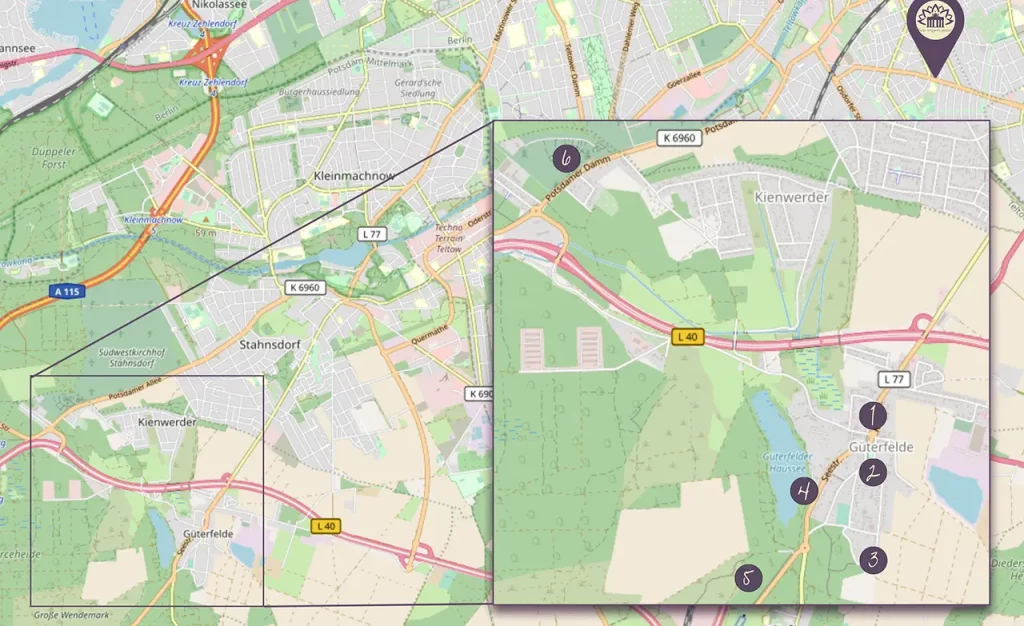
Historical Development of Güterfelde
Situated on the Leipzig-Spandau trade route, “Jutergotz” was first mentioned in a document in 1263, when the monastery of Lehnin acquired the Slavic Angerdorf. However, there were at the same time different owners of levy rights over the centuries to have given, which came only 1700 probably all to the office Potsdam. A raid by Magdeburg robber barons in 1411 seemed to have been devastating, as well as another raid by Teltow linen weavers in 1615. The Thirty Years’ War had an even greater impact on Güterfelde, which apparently only the Viceschulze, three farmers and three Kötter survived. Likewise, the knight’s seat must have been severely damaged, since an electoral consensus explicitly authorized its reconstruction. After all, in 1801 the village had seven farms, two half-farmers, two Ganzkötter and 14 bundles plus eleven depositors.
In 1804 David Gilly built a castle, which Albrecht von Roon had baroquely rebuilt in the 1870s. The pastor Brodelten wrote the “Chronik von Gütergotz” in 1874, the first printed chronicle of Brandenburg. Theodor Fontane visited him in the vicarage built in 1826, as he recorded in his “Wanderungen”. Finally, in 1893, the city of Berlin acquired the manor and used it as a children’s tuberculosis sanatorium, while the fields were used for irrigation.
In the course of gemanization, the National Socialist administration replaced the place name Gütergotz with Güterfelde in order to cut the Slavic roots. Unlike other places, it did not get back its original name until today, although the first mayor after 1945 used the old name and the old seal. More important for the new rulers was the expropriation of the manor and redivision of the land. The vehement dismemberment then led to the establishment of a Type I LPG in 1953, and later to Type III. Finally, in 1960, another Type I LPG was established with twelve members, who joined the first Type III LPG in 1968. On January 1, 2002, Güterfelde was incorporated with Schenkenhorst and Sputender into Stahnsdorf.
 Güterfelde Village Church
Güterfelde Village Church
The village church is believed to date back to the 13th century. The very regularly hewn fieldstone building then received its brick tower in the 14th century, to which a pointed helmet was added in 1806. The parish had the east gable added in 1867 and also extended the chancel to the width of the nave. The 2.3 x 5.45 m apse is attached to it. By the way, the gable of the choir is built with red bricks. The gallery probably dates back to the 18th century.
Two bronze bells from 1925 by the company Franz Schilling & Söhne from Apolda ring in the tower, while the organ from 1978 by the company Schule in Potsdam resounds inside. The sixteen-branch chandelier was donated to the congregation by Mrs. von Roon in 1873. The principle pieces, altar, lectern and baptismal font from 1990, are kept simple. Since 2007, an electric heater has warmed the house of worship.
Church service: Sun 09:30.kirche-gueterfelde.de
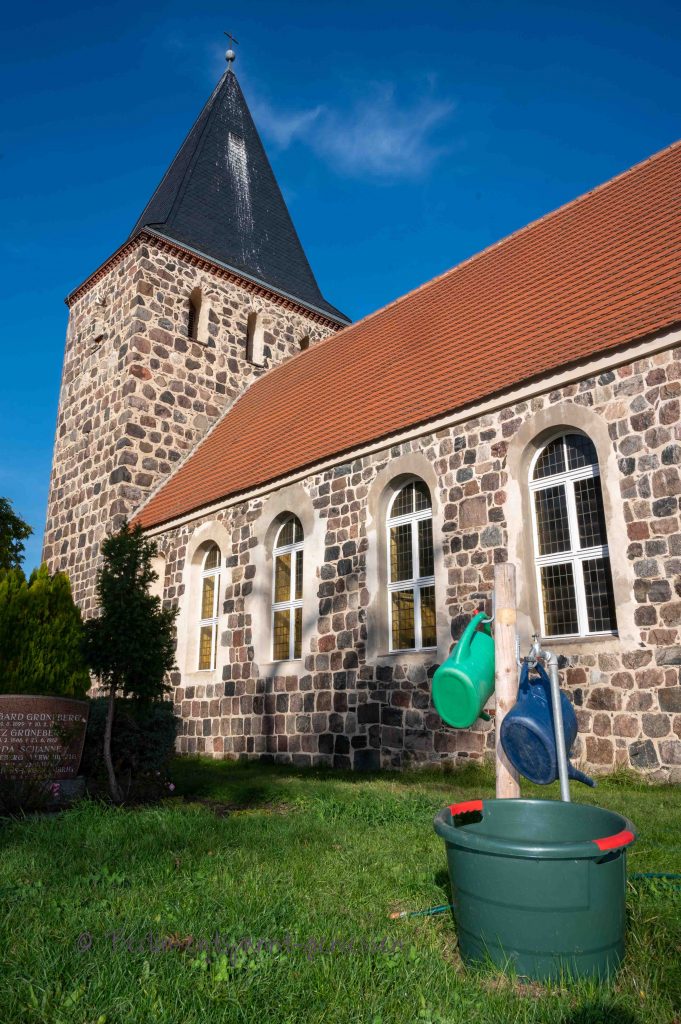
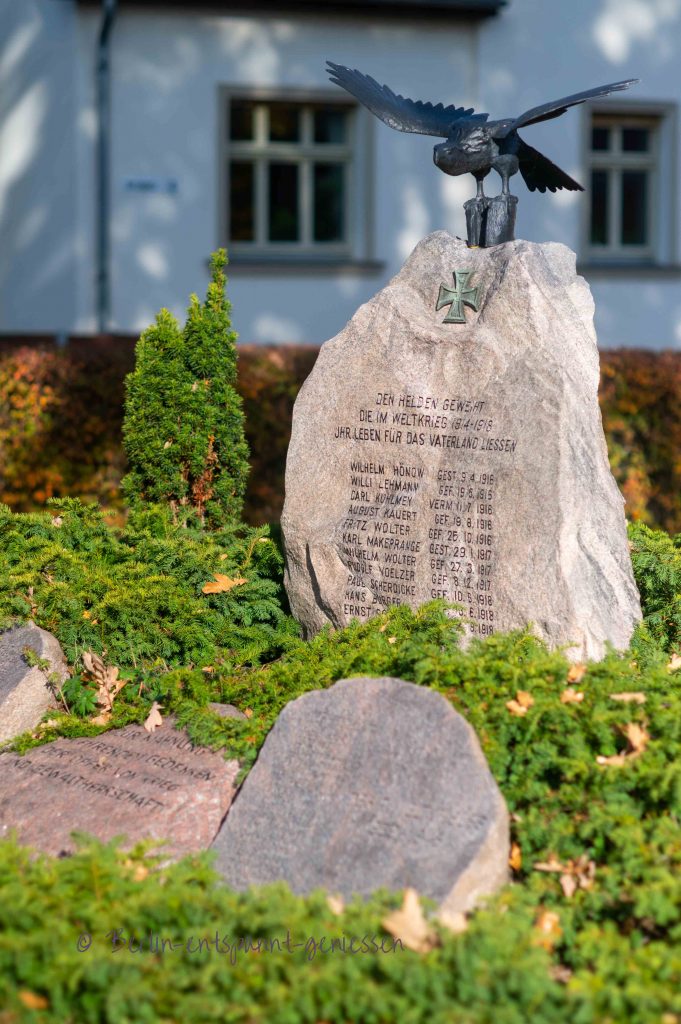
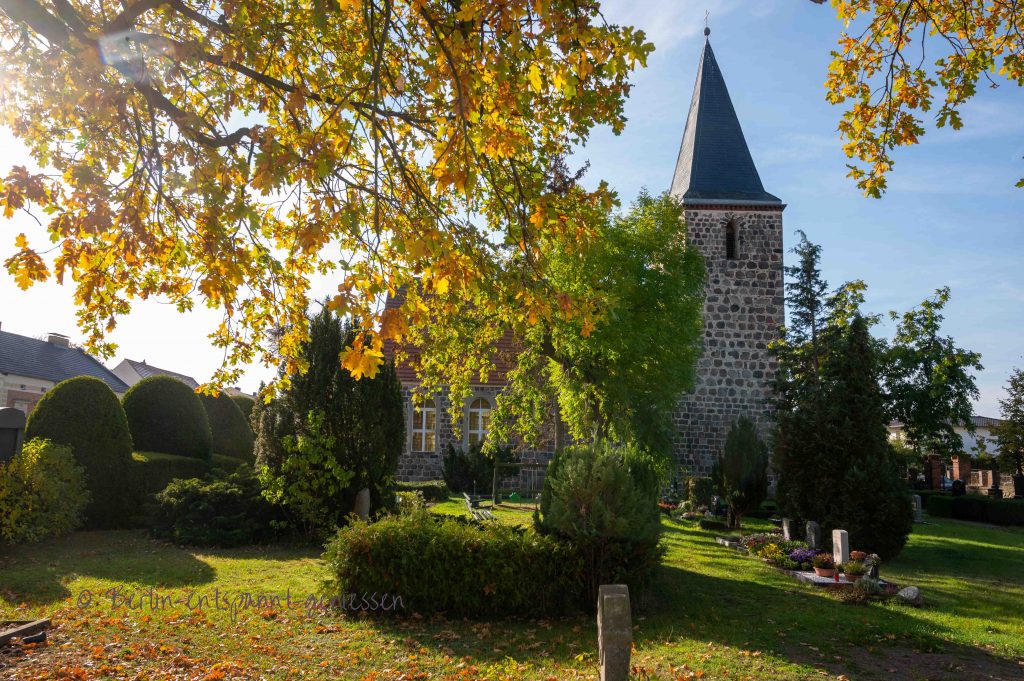
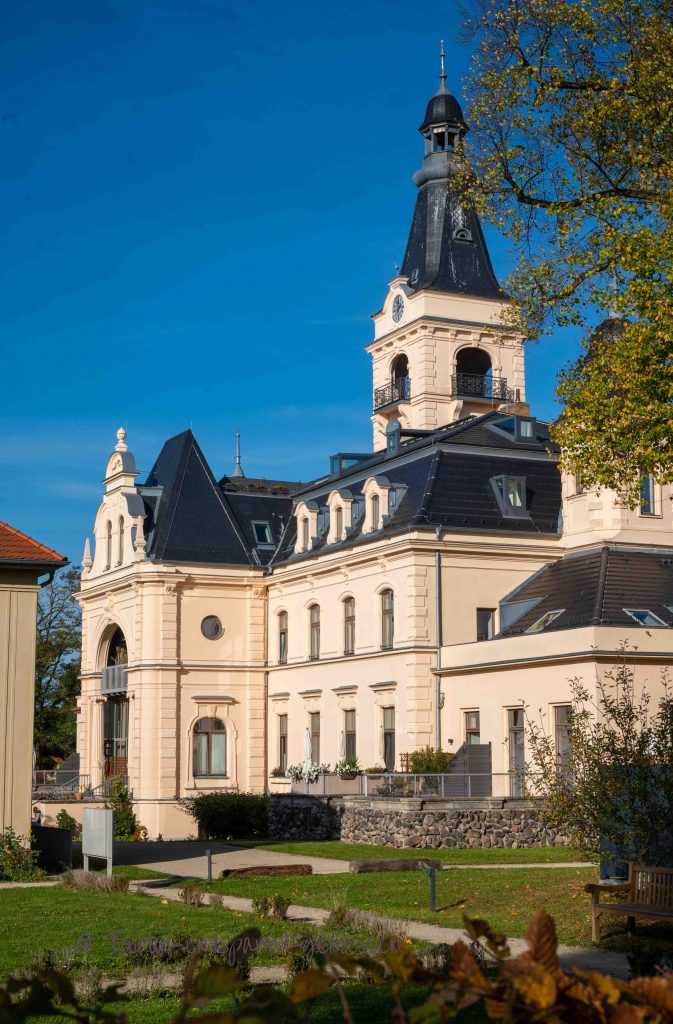
 Güterfelde Castle
Güterfelde Castle
Güterfelde Castle was built by August Friedrich Grothe-Buckow (1753-1815), head of the state lottery, by the architect David Gilly, together with the park and estate. It is based on the manor house that burned out in 1793. The student of Schinkel arranged the castle and park symmetrically and in one axis with the village church. However, Grothe had to flee to Poland because he had collaborated during the French occupation and was accused of treason.
After a long period of vacancy and various owners, it came to the Prussian Minister of War Albrecht von Roon (1803-1879), who had the then neglected property renovated in the neo-Renaissance style, following the example of the Rothschilds’ Ferrières Castle (outside Paris).
Shortly thereafter (1873) he sold it to the court banker of the Hohenzollerns, Gerson von Bleichröder (1822-1893), the richest man in Berlin at the time. He had the Oberhof gardener Theodor II Nietner redesign the park, following Gilly’s formal language.
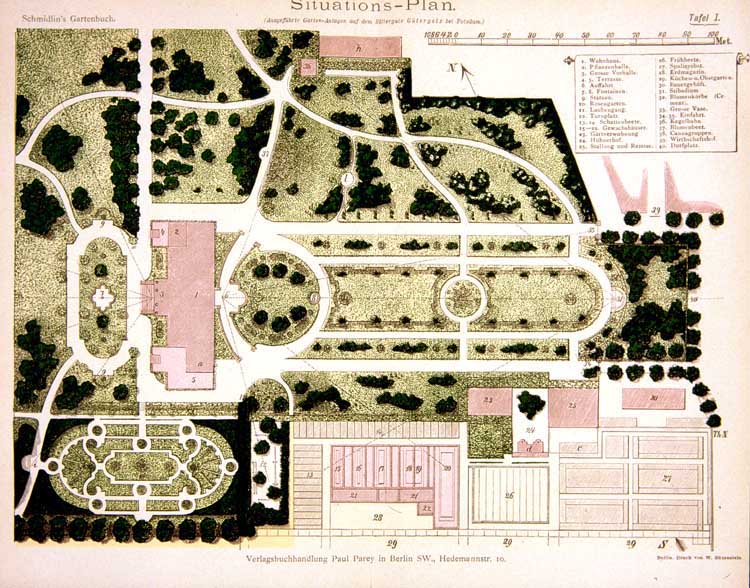
The city of Berlin bought the former manor in 1893 and housed a tuberculosis sanatorium there. From 1927, it served as staff quarters for the Reichswehr, and from 1933, the SA Guards “Feldherrenhalle” used the site as a training facility. From 1940, the NSDAP takes over the building. The Red Army accommodates a commandant’s office from 1945-52 until the handover to the GDR. The East German administration decides to use the building as an old people’s home, although an episode of Polizeiruf 110 in 1955 was just that, an episode. For the retirement home remained until 2010.
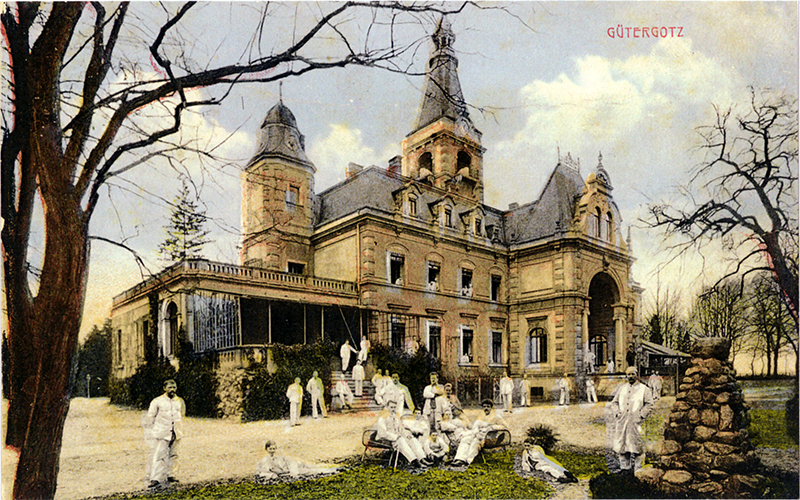
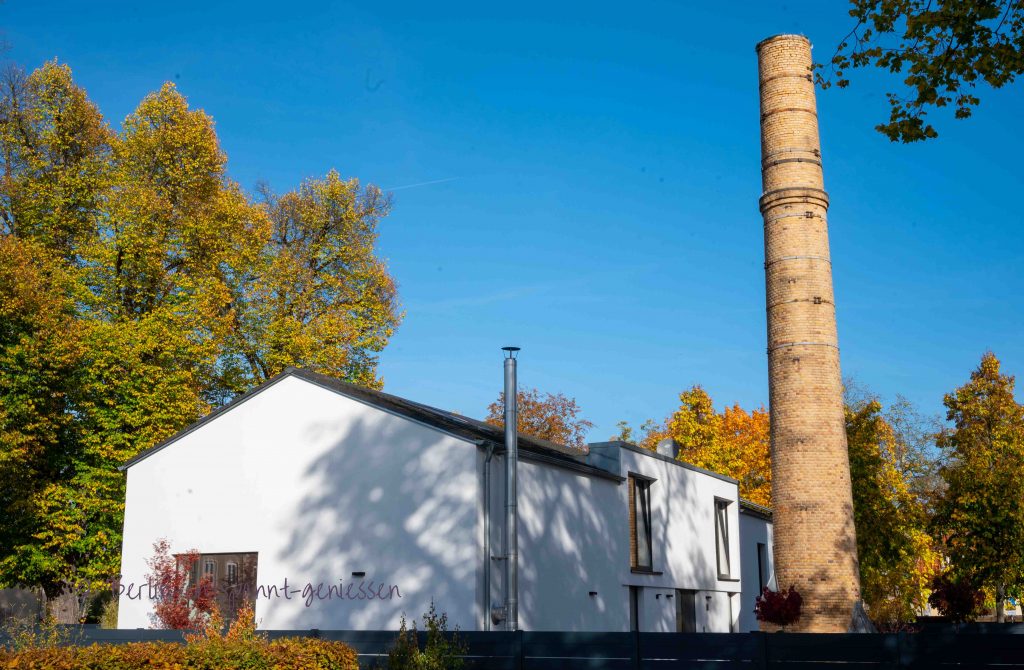
An additional ward house from 1952 has been realized in a stylistically adapted manner. The Bauakademie had built it in experimental adobe stamping as a showcase project when building materials were scarce. From 2012-2014, an architectural firm converted the building, now named Chateau de Roon, and the adobe structure into condominiums. The municipality was also able to restore the chateau garden, which had become overgrown by 2020. The wrought-iron gates disappeared after 1945.
 Güterfelde Cemetery
Güterfelde Cemetery
The cemetery of Güterfelde is a small burial ground at the southern end of the village. A small chapel stands on it.
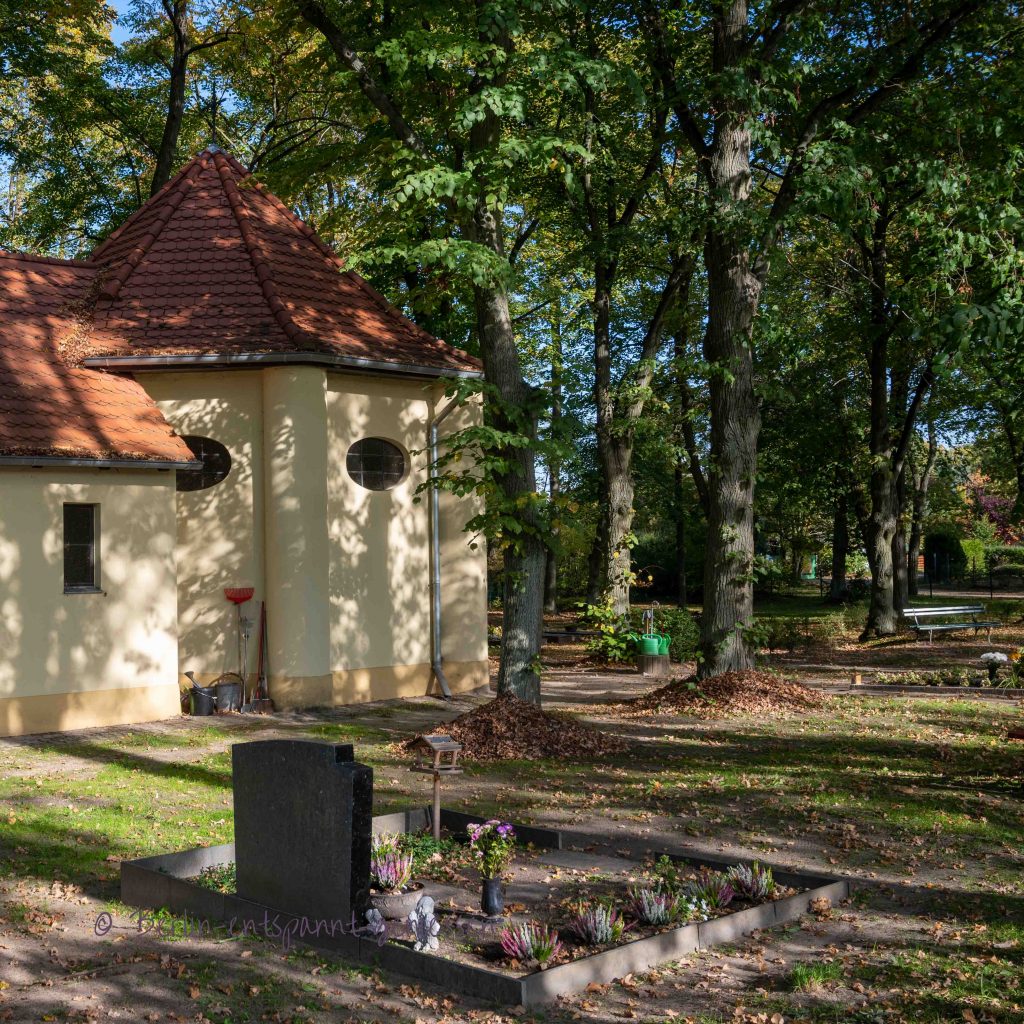
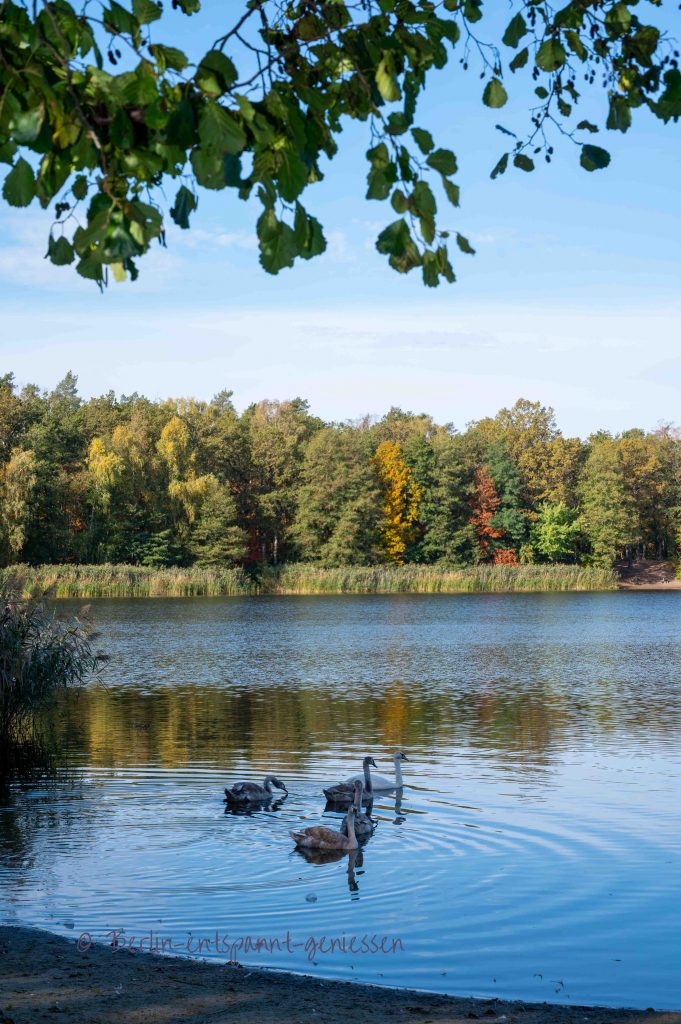
 Lake Güterfelde
Lake Güterfelde
The 14.96 large Güterfelde Lake was already formed in the Ice Age. As a fairly shallow lake (almost the entire size walkable), it is particularly suitable bathing area on the eastern shore even for small children. However, this is done without supervision and at one’s own risk. In 2003 the municipality had to renovate the “pearl of the Parforceheide” by dredging it and since then it has been supplied with groundwater again and again, as it has no inflow of its own. Otherwise it is in danger of silting up. The lake is picturesquely surrounded by trees and girdled with reeds.
Bishop Benjamin Ursinus (1646-1720), who anointed Frederick III and baptized Frederick the Great, had a pleasure house built on the shore in 1696, as the father of 18 legitimate children was very fond of worldly pleasures. However, this building called “Praedium” no longer exists. A sandy beach, a lawn for sunbathing and the trees with shade make the stay very pleasant for bathers in summer. In addition, a kiosk offers refreshments and toilets also provide relief. Nearby parking spaces are limited, however. Large parts of the shore belong to the nature reserve. Therefore, horses cannot use the shore paths and dogs must be leashed. Two jetties, also on the eastern shore, allow fishing for eels, perch, pike, carp and various whitefish. Fishing permits are available on the website of the Landesanglerverband Brandenburg e.V. lavb.de.
 Güterfelde Heath
Güterfelde Heath
The Güterfelder Heide was used by the Wehrmacht as a military training area. From 11.9.1942 the infantry replacement battalion Feldherrenhalle (formed from the 5th and 6th Kp. of InfErsBtl 9 Potsdam) was stationed here. A small field airfield was also established as a working base of Gatow Airport. On the shooting range area at Priesterweg the sport shooters practiced in 1936.
Soviet Army and the National People’s Army as well as GDR company combat groups as a training ground for house fighting and driving school training. It was thus the site training area for the NVA Moschützen Regiment 2, which was housed in the barracks at Güterfelder Damm. In 1989, the forest served as a disposal area for NVA units to put down a popular uprising if necessary. At the so-called Butterberge opposite the forester’s house Nudow, i.e. north of the military training area) the large ammunition depot ML-26 was hidden, which was subordinated to the Rocket and Weapons Technical Service (RWD). Afterwards, the Bundeswehr trained infantry until 2004.
Finally, the ruins of the wall were dismantled and reforested, so that it is now a beautiful piece of nature that invites you to hike.
 Wilmersdorf Forest Cemetery Güterfelde
Wilmersdorf Forest Cemetery Güterfelde
The Wilmersdorfer Waldfriedhof Güterfelde is not to be confused with the Wilmersdorfer Waldfriedhof Stahnsdorf. The latter is located north of the Südwestkirchhof and the former south of it. Originally, the Friedenau municipality established the burial ground in 1909 as the Friedenau Forest Cemetery in Gütergotz – for the same reason: lack of land for burials.
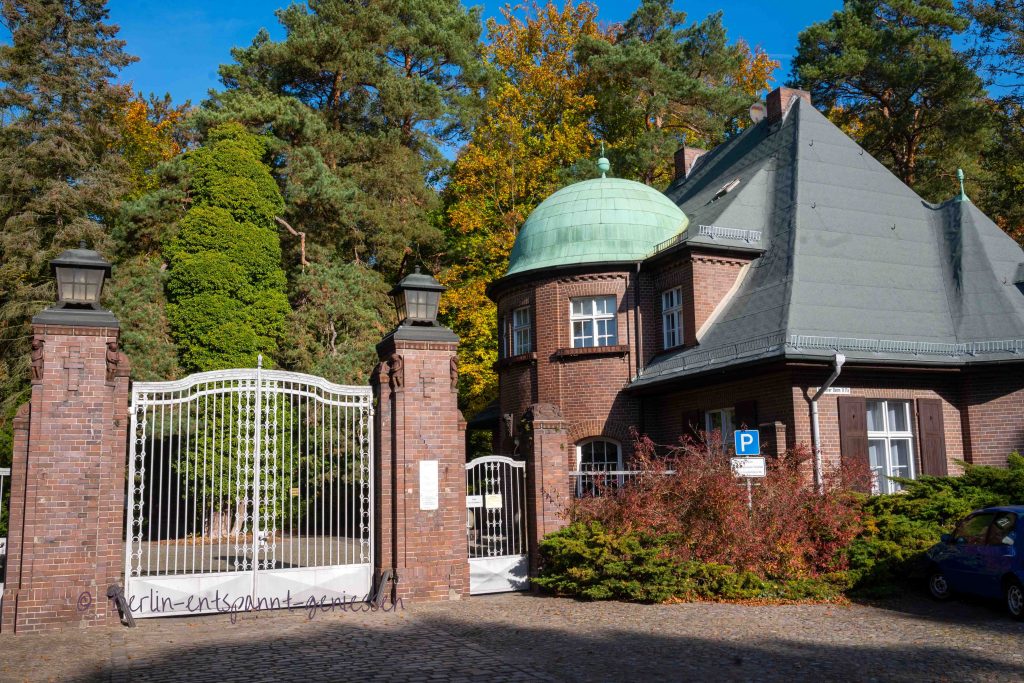
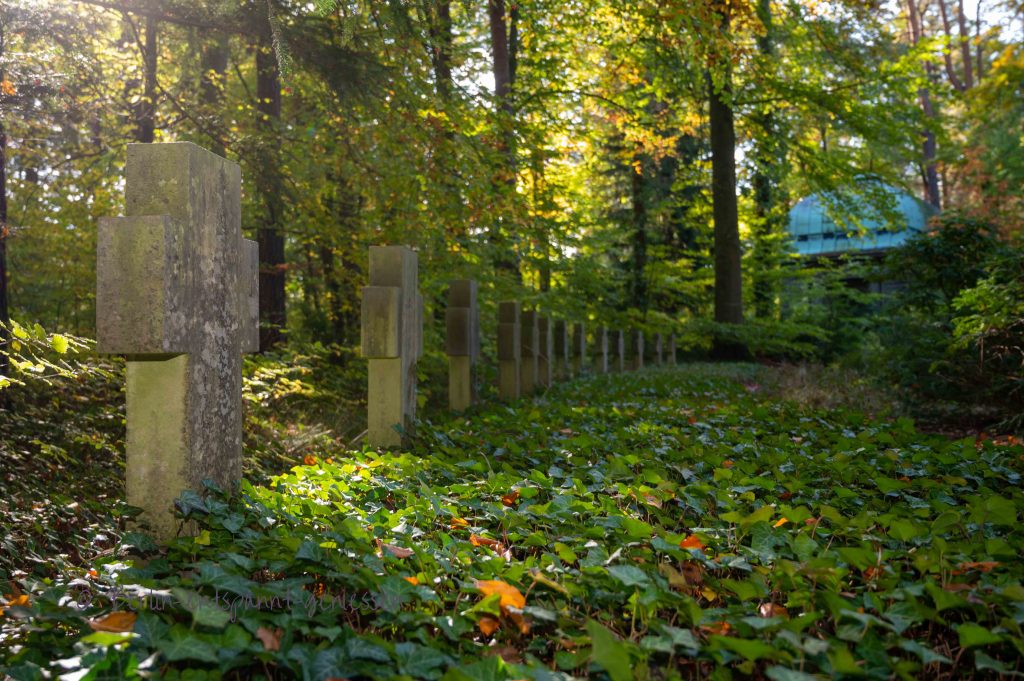
Municipal building official and architect Hans Altmann (1871-1965) laid out the Waldfriedhof’s network of paths based on Friedenau’s model. Accordingly, the chapel he designed, analogous to Friedenau’s Church of the Good Shepherd, is located in the center of the grounds. The term chapel is an understatement: The red clinker brick building on a limestone base has the dimensions of a church. Altmann also designed the cemetery caretaker’s house, the fountain and benches. In 1914, a Friedenauer could find his final resting place here for the first time. However, Friedenau’s incorporation into Berlin in 1920 and thus its affiliation with Schöneberg remedied the lack of burial space.
The approx. 13-hectare cemetery was now called Waldfriedhof Schöneberg, but was hardly used. With the administrative reform in 1935, Wilmersdorf was now responsible and a renaming to Wilmersdorfer Waldfriedhof Gütergotz (shortly after Güterfelde) went along with it.
During the division the people of Güterfelde had the choice between the small Güterfelde cemetery (see above) and this large forest cemetery. After the reunification, a renovation of all buildings took place, but burials are no longer permitted.
The Friends and Sponsors of the Film Museum Berlin had a stele erected at the urn grave site (UR 670) of Nosferatu actor Max Schreck (1879-1936) on the 75th anniversary of his death. A state mausoleum (opposite the chapel) was desired by Kurt Hoffmann, who had become wealthy as a large landowner in German colonies.
In 2018, the Berlin Senate elevated the resting place of the communist actor and victim of National Socialism, Hans Otto, to a grave of honor. In addition, an obelisk in the southwest corner of the Waldfriedhof commemorates the Soviet soldiers and primarily forced laborers buried here, a total of 1,466 Soviet citizens. In the northeast corner, a memorial commemorates the 383 Poles and 720 Germans murdered in the Sachsenhausen and Wewelsburg concentration camps and buried here.
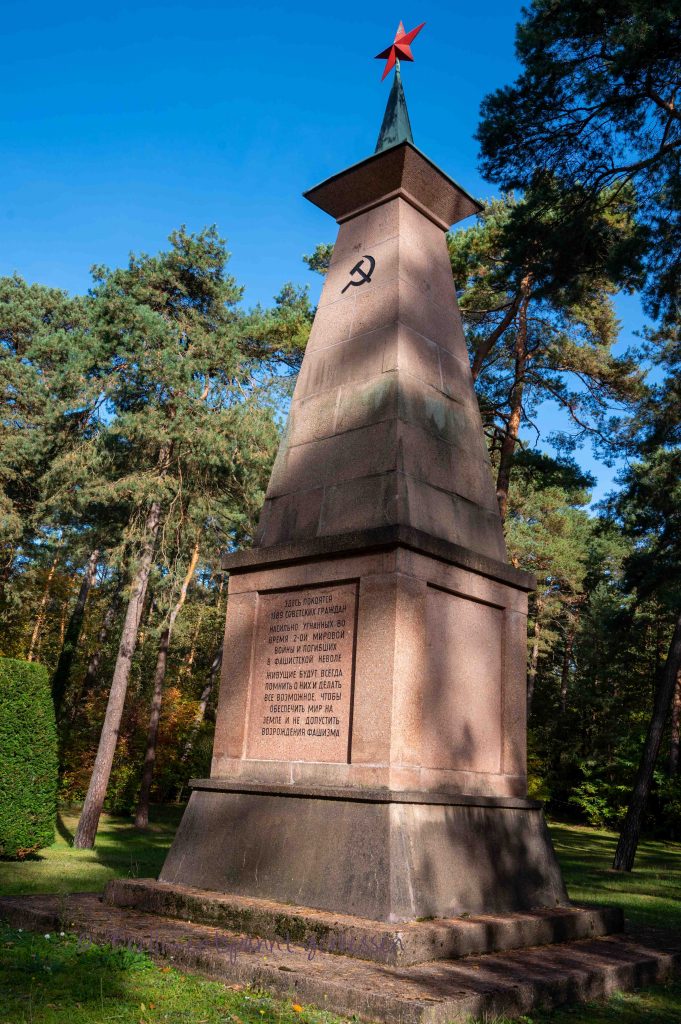
 Güterfelde Village Church
Güterfelde Village Church Güterfelde Castle
Güterfelde Castle Güterfelde Cemetery
Güterfelde Cemetery Lake Güterfelde
Lake Güterfelde Güterfelde Heath
Güterfelde Heath